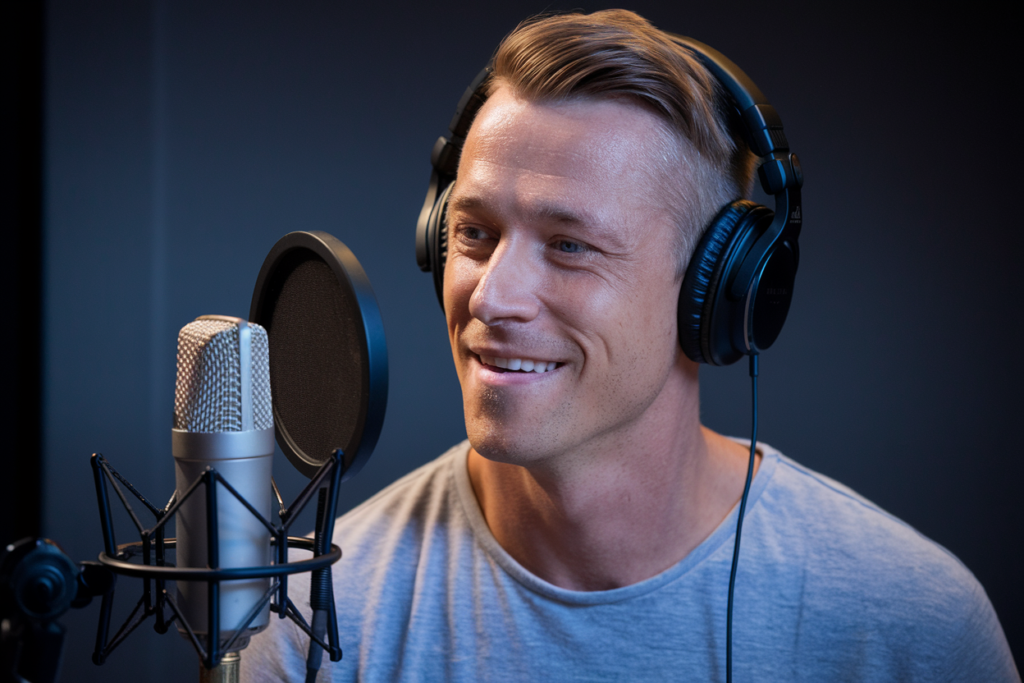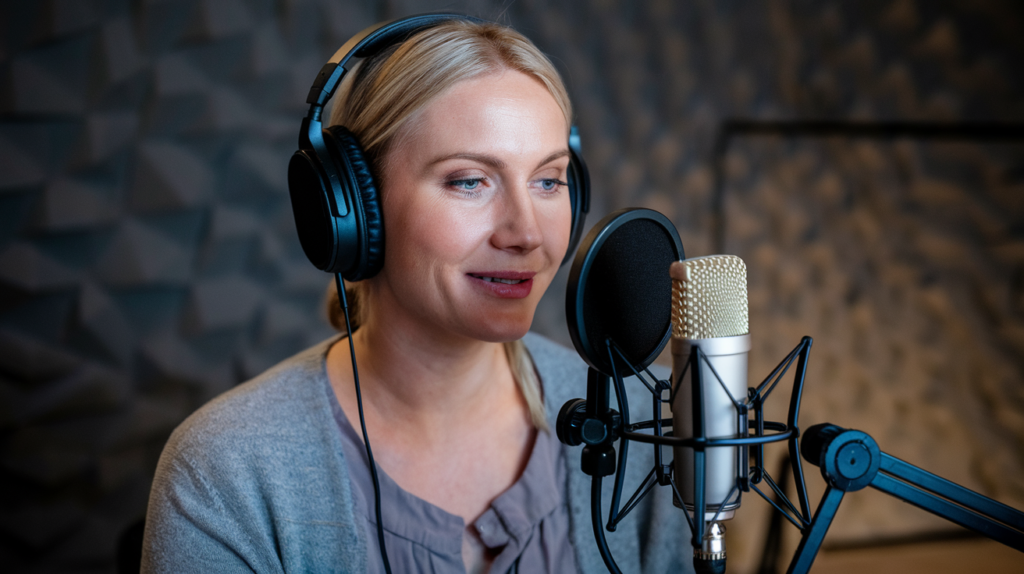Key Takeaways
- Distinct Accents: Australian English voiceovers provide a relaxed and approachable tone, while British English conveys sophistication and formality, influencing audience perception.
- Phonetic Variations: Key differences in vowel sounds and consonant pronunciations exist between the two accents, affecting how messages are received by listeners.
- Intonation Patterns: Australian English features an inviting upward intonation, suitable for casual content, whereas British English employs varied pitch ranges that emphasize authority.
- Cultural Influences: Media representation shapes cultural perceptions of accents; Australian voiceovers resonate with authenticity while British voiceovers align with professionalism.
- Industry Applications: Choose voiceovers based on project type—Australian for light-hearted entertainment and relatable advertising, British for dramatic storytelling or luxury branding.
Ever wondered how Australian and British English voiceovers differ? While both accents share roots, they offer unique flavors that can dramatically impact your project. Whether you’re creating a commercial or an educational video, choosing the right voiceover style is crucial for connecting with your audience.
Australian English brings a laid-back vibe that’s perfect for casual content, while British English often exudes sophistication and formality. The nuances in pronunciation and intonation can make all the difference in conveying your message effectively. So how do you decide which one to use? Let’s dive into the key differences between these two distinct styles and help you choose the best fit for your needs.
Overview of Voiceovers
Voiceovers play a crucial role in bringing projects to life. Whether it’s a commercial, an educational video, or an animated film, the right voice can elevate the content and connect with audiences effectively. When choosing between Australian and British English voiceovers, understanding their unique characteristics is essential.
Australian English voiceovers are often recognized for their relaxed and approachable tone. This style suits casual content well, making it ideal for friendly ads or engaging tutorials. Voice artists who specialize in this accent typically convey warmth and authenticity that resonate with listeners.
On the other hand, British English voiceovers carry a sense of sophistication and formality. They’re often preferred for corporate presentations or high-end commercials where professionalism matters most. A skilled voice actor using this accent can instill confidence and credibility in your message.
When selecting a voice over talent, consider the target audience and project goals. An Australian accent may appeal more to younger demographics looking for relatability while a British accent might attract those seeking elegance or tradition.
Ultimately, both accents offer distinct advantages depending on your project’s needs. By understanding these differences in tone and style, you can make informed decisions that enhance your audio-visual narratives.
Key Differences in Accent
Understanding the key differences in accent between Australian and British English voiceovers can help you select the right voice talent for your project. Each accent carries distinct phonetic features and intonation patterns that impact how your message is received.
Phonetic Features
Australian English features a range of vowel sounds that differ significantly from those found in British English. For instance, the „i“ sound in words like „fish“ often becomes more centralized, sounding closer to „feesh.“ In contrast, British English tends to maintain clearer vowel distinctions. Additionally, consonants in Australian accents may be softer; for example, „t“ sounds can be pronounced as a glottal stop. These phonetic variations mean that listeners perceive words differently depending on the accent used by the voice artist.
Intonation Patterns
Intonation plays a crucial role in conveying meaning and emotion through voiceovers. Australian English generally exhibits a more relaxed intonation pattern with upward shifts at sentence ends, which can create an inviting tone. This upbeat delivery suits casual content well. On the other hand, British English often employs a more varied pitch range with falling intonations that emphasize authority and sophistication—ideal for corporate presentations or high-end commercials. Understanding these patterns helps ensure that your chosen voice actor effectively communicates your intended message while resonating with your target audience.
Cultural Influences on Voiceovers
Cultural factors significantly shape voiceovers, affecting audience perception and engagement. Different accents carry unique associations that can impact how your message is received.
Media Representation
Media representation plays a crucial role in shaping cultural perceptions of accents. In Australia, media often showcases relaxed and approachable characters, influencing the preference for Australian English voiceovers in casual settings. This style resonates with audiences looking for authenticity and warmth. Conversely, British English frequently appears in formal contexts—think corporate videos or high-end advertisements—where sophistication and credibility are paramount. Understanding these representations helps you choose the right voice talent to align with your project’s tone.
Local Dialects
Local dialects enrich both Australian and British English voiceovers, adding layers of authenticity and relatability. Within Australia, regional accents vary from the laid-back tones of Queensland to the sharper sounds found in Melbourne. Each brings its own flavor to projects, allowing you to connect more deeply with specific demographics. Similarly, British English encompasses various dialects—from Received Pronunciation to regional accents like Cockney or Scouse—each contributing distinct nuances that might resonate differently with audiences. Selecting a voice artist who embodies these local characteristics ensures your project feels genuine while appealing directly to your target market’s preferences.
Applications in Industry
Voiceovers play a pivotal role across various industries, influencing how audiences perceive and engage with content. Understanding the applications of Australian and British English voiceovers can help you make informed decisions for your projects.
Entertainment
In the entertainment industry, voiceovers bring characters to life in animated films, video games, and television shows. Australian English offers a laid-back charm that resonates well with younger audiences, making it perfect for light-hearted animations or comedic roles. Conversely, British English often lends itself to dramatic storytelling or period pieces, where its sophistication enhances the narrative’s depth. Selecting the right voice talent based on project genre ensures that characters connect authentically with viewers.
Advertising
Advertising relies heavily on effective communication to capture attention and drive action. Australian English voiceovers create an approachable vibe that works wonders for casual brands looking to foster connections with their audience. Think of campaigns aimed at youthful consumers—these often benefit from an authentic Australian accent that feels relatable.
On the flip side, British English excels in high-end commercials targeting upscale markets. The precision and elegance of this accent convey trustworthiness and professionalism—qualities vital for luxury products or services. Choosing a suitable voice artist can significantly affect brand perception; knowing your target demographic allows you to select a voiceover actor who embodies the essence of your message.
In both entertainment and advertising sectors, understanding these nuances helps tailor your content effectively while maximizing engagement potential.
Conclusion
Choosing between Australian and British English voiceovers can significantly impact your project’s effectiveness. Each accent brings its own unique qualities that resonate differently with audiences. Whether you need a warm and approachable tone or a sophisticated and authoritative sound, understanding these distinctions will help you make an informed decision.
Consider the context of your content and the emotions you want to evoke. By aligning your choice with the audience’s expectations, you’ll enhance engagement and ensure your message is communicated clearly. Ultimately, selecting the right voiceover style not only elevates your project but also strengthens your connection with viewers.
Frequently Asked Questions
What are the main differences between Australian and British English voiceovers?
Australian English voiceovers are known for their warmth and relaxed tone, making them suitable for casual content like ads and tutorials. In contrast, British English conveys sophistication and formality, often used in corporate presentations and high-end commercials. Understanding these differences helps in choosing the right style based on project goals.
When should I use Australian English voiceovers?
Choose Australian English voiceovers for projects that require a friendly, approachable vibe. This accent is ideal for casual advertising, engaging tutorials, or light-hearted animations aimed at younger audiences.
When is British English preferable for voiceovers?
British English is best suited for formal contexts such as corporate presentations or luxury product advertisements. Its sophisticated tone instills confidence and credibility, making it effective in dramatic storytelling or high-end marketing campaigns.
How do phonetic features differ between the two accents?
Australian English features distinct vowel sounds with softer consonants, while British English maintains clearer vowel distinctions and varied pitch ranges. These phonetic characteristics influence how messages are perceived by different audiences.
Why do cultural influences matter in choosing a voiceover accent?
Cultural influences shape audience perceptions of accents; Australian accents evoke a relaxed atmosphere while British accents imply sophistication. Selecting a voice artist who embodies relevant cultural traits enhances engagement and resonance with target demographics.
How can local dialects enhance voiceover projects?
Incorporating regional dialects adds authenticity to both Australian and British accents. A voice artist who reflects local characteristics can better connect with specific audiences, enriching the overall impact of your project.
What industries benefit most from these types of voiceovers?
Both Australian and British English voiceovers have applications across various industries including entertainment and advertising. For instance, casual brands may prefer Australian voices while luxury products typically lean towards British accents to convey professionalism.
How do I choose the right voice talent for my project?
Consider factors such as your target audience, project goals, and desired tone when selecting voice talent. Understanding the unique qualities of each accent will help ensure that your message resonates effectively with listeners.







